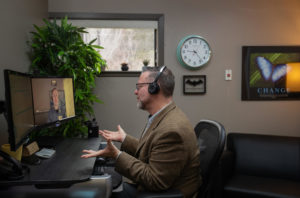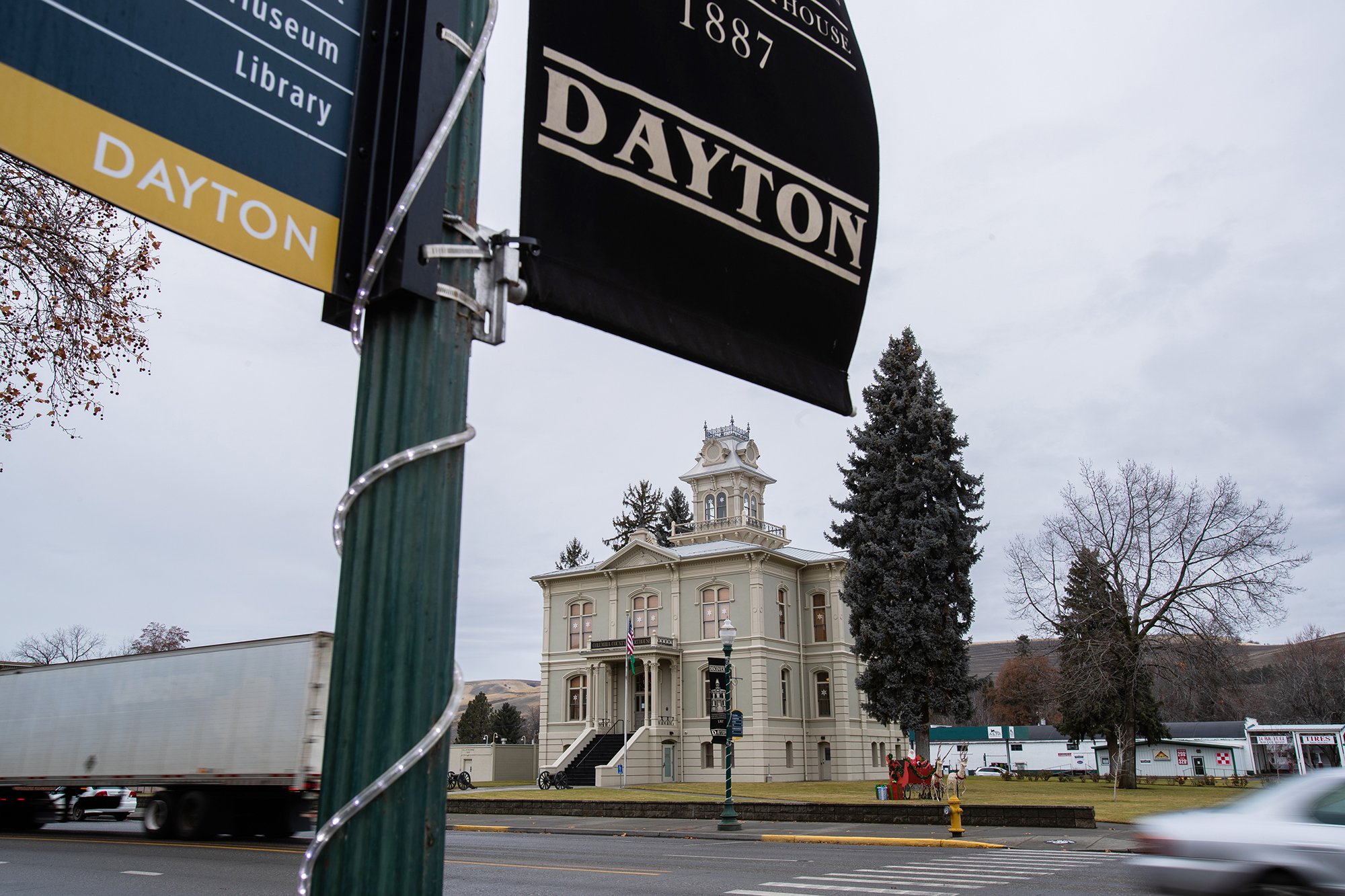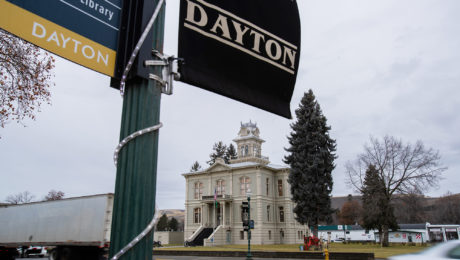Colfax Nanotechnology Startup Poised to Receive $1.5M Grant from US Air Force
Colfax-based Nanotechnology Company Challenged By U.S. Air Force to Raise $1.5 Million to Help Crowdfund Military Research
COLFAX – A local Colfax based tribology company is set to receive a $1.5 million dollar grant from the U.S. Air Force, if it can raise the matching funds in time.
TriboTEX technology has won numerous awards, and obtained funding from a variety of institutions, including the National Science Foundation, the Department of Energy, and NASA.
To date, the company has sold over 36,000 units worldwide. They have a range of products suitable for the smallest lawn mower engines to the largest semi truck engines.
TriboTEX applied for a Small Business Innovation Research program through AFWERX, in order to obtain access to the defense market. AFWERX is a United States Air Force program with the goal of fostering a culture of innovation within the service. Encompassing a number of programs supported with relatively small amounts of funding, the initiative is intended to circumvent bureaucracy and engage new entrepreneurs in Air Force programs.
The U.S. Air Force has challenged the TriboTEX team to raise up to $1.5 million for matched funding, which is necessary to scale the business operation and produce more products for military testing. TriboTEX is working with AFWERX to test TriboTEX products in military equipment. The TriboTEX team plans to raise the money necessary to fulfill their grant requirements through crowdfunding, by launching a Kickstarter campaign that went live today, for the company’s latest nanotechnology product, “TriboTEX Transmission.”
TriboTEX Transmission uses the familiar two-sided nanoparticles specifically designed for automatic transmissions. The nanoparticles reduce friction, which prevent accelerated wear, lower temperature and noise, and extend the life of the transmission. Transmissions with TriboTEX will last longer, potentially saving thousands in expensive repairs.
Currently, the Department of Defense spends millions of taxpayer dollars in maintenance costs. TriboTEX is aiming to save Americans millions by preserving equipment used by the military. “Helicopter gear boxes are limited in flight time, and longevity is critical for safety of the flight,” stressed CTO Rudenko, who says the product will work for anyone who wants to improve the functionality of their transmission, whether its a 2002 Toyota Prius or a Sikorsky UH-60 Black Hawk helicopter.
- Published in News + Updates
Collaboration between UW & Dayton brings mental health care to rural communities
first appeared in Crosscut on January 6, 2020 / by Emily McCarty
A small team in southeast Washington is leading the charge in telepsychiatry
In tiny Dayton in southeastern Washington, the local hospital district has developed an innovative mental health program that has caught the attention of rural hospitals around the state.
The Columbia County Health System previously retained an in-house psychiatrist, but financial realities made continuing that approach impossible. CEO Shane McGuire didn’t want to give up, so he began the search for solutions.

Wayne Pollard teleconferences with Dr. Matthew D. Iles-Shih M.D., M.P.H. at the Columbia County Health System Clinic in Dayton, Washington December 19, 2019. (Rajah Bose for Crosscut)
Last July, McGuire found an opportunity to work with the University of Washington’s psychiatry program and its Advancing Integrated Mental Health Center (AIMS). The center’s primary focus is creating collaborative care models between primary care providers and their mental health care counterparts.
Dayton’s model weaves behavioral health care directly into primary care appointments. In Dayton, a mental health screening that indicates the patient would benefit from specialty care prompts a referral right away.
McGuire says the program extends beyond the AIMS model, because the UW psychiatrists not only support the medical staff, but also work directly with patients.
“They were willing to think outside the box for us,” he says. “I don’t think they really have a name for what they’re doing here yet.”
Rural Washington has struggled with behavioral health care solutions, with most citing problems in recruitment, retention and the high financial burden of providing specialty services. These hospital districts must be creative in building programs robust enough to meet basic mental health care needs, especially as Gov. Jay Inslee prepares to fully integrate behavioral health in the new year.
The 2019-2021 state operating budget provides $350.5 million to improve the mental health system, with over $35 million dedicated to community services and beds. Close to $120 million in the capital-construction budget was set aside for community-based beds to keep patients in their communities instead of being sent to Western or Eastern State Hospital.
Two bills making their way through the state Legislature would further change telemedicine for rural communities. Currently in committee is Senate Bill 5385, which seeks to pay out telehealth services at the same rate as in-person care. Senate Bill 5387, which took effect last July, allows the remote telehealth physician to access the patient’s local health records.
For now, each district is expected to find mental health solutions that will work best for them with the resources they have.

“I think there’s 14 rural hospitals in the state that are operating in the red, year after year, working in their communities,” McGuire says. “We’re safety net organizations for our communities. We don’t turn people away.”
Rural communities are taking a variety of approaches toward mental health. Some, like Three Rivers Hospital in Brewster, provide crisis services only in the emergency room through the county health department. Newport Hospital, an hour north of Spokane, has a visiting psychiatrist once or twice a month. Cascade Medical in Leavenworth is looking at using pharmacists for more specialized prescribing assistance. Many towns have started building their mental health programs only within the past two years, starting with a few social workers, a dedicated nurse or a clinical psychologist.
But even in rural hospital districts with existing behavioral health care, psychiatrists are uncommon. Those services are usually provided by monthly visits from a visiting psychiatrist or, in more recent years, utilizing telemedicine services with psychiatrists in other cities using video conferencing.
Patients in Dayton do just that. They have access to top-tier psychiatric services from UW using Zoom, an encrypted video conferencing platform that meets federal HIPAA privacy regulations.
“You’ve got some of the best psychiatrists in the nation working in guiding the care of our patients … which is really an amazing overlap,” McGuire says.
Leading the charge is Dr. Matt Iles-Shih, an adult psychiatry and addiction specialist from the University of Washington’s Medical Center. His team initially started working in outpatient care, but this fall they rolled out inpatient services to the hospital with two additional attending psychiatrists who dedicate two hours a day.
Iles-Shih does one-on-one telemedicine for every new patient’s first appointment to start them on their course of treatment, prescribing psychotropic medication as needed or managing their current doses. About three months later, the patients will have a follow-up. If they have ongoing issues that need more treatment, repeat telehealth appointments can be made.
He also works directly with the doctors and social workers, providing curbside consultations to answer questions and provide clarification. He says this model not only benefits the patients, but allows the doctors to grow in their knowledge as well, strengthening the team across the board.
“Just through the process of clinical support that we’re doing through the program, there’s an upscaling and a sense that the PCP [primary care physician], she’s just absorbing a lot and actually changing their practice,” Iles-Shih says. “It’s not like you’re just reliant on someone else in another city, but this is an opportunity to really build up your own skills and capacities as an individual clinician.”
For outpatient needs, he communicates directly with one of Columbia County’s two social workers, Wayne Pollard and Tasha Willoughby.

On Thursday mornings, Iles-Shih video conferences with Pollard about four to eight patients. Iles-Shih will enter notes into the shared electronic database, which the patient’s primary doctors can access during regular appointments.
Physicians at Columbia County screen their patients every year for depression and anxiety. Those already in the newly created behavioral health program are rescreened with every visit. Depression and anxiety are the main diagnoses, but post-traumatic stress and bipolar disorders follow closely behind, Pollard says.
Pollard has been Columbia County Health System’s clinical social worker for the past two years. When he started, there was no program; McGuire created an entirely new system from the ground up.
The first half a year was clunky, Pollard says, but they saw the number of clients grow substantially. They hired their second social worker, Willoughby, to help handle the ever-growing caseload. Pollard averages about 60 clients, while Willoughby sees upwards of 90.
In crisis situations, where mental health services are needed as soon as possible, Pollard says the team can get patients in front of a UW specialist within two hours. This kind of expedited service from a psychiatrist is almost unheard of in rural health systems, he says.
There are no face-to-face psychiatrists in the area, Pollard says, and while the Tri-Cities offers such services, patients may have to wait up to a year to see one.
“It’s unusual that I could see somebody last week and tell her, ‘There’s a spot to see Dr. Matt next week. Let’s get you in front of him,’ ” he says. “That just doesn’t happen anywhere. People are blown away that they’re in front of this super specialist psychiatrist within a week or two.”
Both social workers are also certified in EMDR, or eye movement desensitization and reprocessing, commonly used to treat trauma.
“We are offering a specialty care here, which is very hard to find anywhere, much less than little Dayton, to have some EMDR therapists dealing with psychological trauma [and] PTSD symptoms,” Pollard says.
The wraparound care patients receive doesn’t stop at counseling, psychiatry and primary care services. The team also includes Paul Ihle, another social worker at Columbia County. He helps clients in everything from insurance complications to housing, but Dayton has him fill a unique need with mobile outreach, which provides transportation assistance for appointments.
About half of Ihle’s clients need transportation because of their mental health, and people were missing appointments because they lacked transportation, Ihle says. So the hospital licensed him to drive a hospital van, including for referrals outside of the community. They’ve brought patients from as far away as UW Medical Center in Seattle and Moscow, Idaho.
“The state provides People for People services, but it has a very rigid criteria for qualifying,” he says. “Some people are successful meeting that criteria, but there’s always circumstances that set up insurmountable hurdles to being successful and it tends to hit most profoundly the sick and the disabled and the poor.”
McGuire has also expanded into the local high school, down the road from the hospital. Pollard or Willoughby spends every Monday at the school with an open-door policy for students to talk about everything from standard “high school drama” to drug use and problems at home, Pollard says. They work with students over 13 years old. so the students can access services without needing parental permission, allowing students to drop in during school hours.

CEO Shane McGuire has lived in Dayton for 16 years and been at Columbia County Health for almost 10 of those. He says they don’t turn people away and their services are unique: people come from as far as Walla Walla. (Rajah Bose for Crosscut)
“We are surprised at the amount of kids coming to see us already,” Pollard says. “We just started at the beginning of the year and easily there’s five or six kids popping in every day, which is pretty significant with being brand new there.”
McGuire wants to make sure the services are available to Columbia County’s whole network of services, so the staff also visits the nursing home attached to the hospital. Therapy is more difficult with cognitive issues, Pollard says, but they attend monthly psychotropic meetings where Iles-Shih is present via video conferencing.
This comprehensive behavioral health care all stems from McGuire, Pollard says. He made an effort to build a program, starting at square one.
“He’s wanting to do much more than the minimum of what’s required in any community. … He has a heart to see people get better,” Pollard says. “He gets the support from the board and a small community here who just want … people feeling as good as they can, instead of shoving this under the carpet like we’ve done for hundreds of years.”
- Published in News + Updates
America’s Most Beautiful Hills — The Palouse
- Published in News + Updates
Washington Commerce introduces “Thrive!” to help high-growth businesses expand
First appeared on Washington Department of Commerce website on Dec. 17, 2019.
OLYMPIA, WA – Expanding on the success of its original economic gardening program, the Washington Department of Commerce has developed Thrive!, a new program to help second-stage companies increase revenues and position for growth.
Based on the Edward Lowe Foundation’s System for Integrated Growth (SiG) framework, Thrive! connects chief executive officers to subject matter experts who provide them with data, analytics, best practices and strategies that are typically only available to larger corporations. This actionable information can be used to overcome roadblocks related to human resources, finances, operations, marketing, sales, international trade and other business issues.
“Since its introduction three years ago, Commerce’s second-stage program has helped 39 businesses across the state find innovative ways to increase growth and revenue,” said Lisa Brown, Commerce director. “Where the original program focused solely on external issues, Thrive! examines internal and external roadblocks to growth, since one can often affect the other.”
Research shows that historically, companies that have completed a second-stage program like Thrive! experience a 15% to 30% increase in revenue.
The ideal candidate for Thrive! is a company that’s been in operation in Washington for at least two years, has between six and 99 employees, achieved $1 to $25 million in annual revenue and has demonstrated an appetite and aptitude to handle additional growth.
To help offset the $4,275 cost of the program, Commerce contributes $1,275 to pay for the initial needs assessment call with the team leader as well as a strengths-weaknesses-opportunities-threats (SWOT) analysis call with a team of experts assigned to address identified business issues. Based on these calls and the resulting work plan, the CEO can move into the research phase of Thrive!, which entails up to 33 hours of professional research time. Thrive! is conducted entirely by phone and a secure online portal created especially for each participating company. Thrive! requires approximately eight to 12 hours of the CEO’s time over the course of four to eight weeks.
More information about Thrive! as well as a link to the application for the program is available at https://startup.choosewashingtonstate.com/programs/thrive/. Contact Susan Nielsen at [email protected] for eastern Washington Thrive! opportunities.
- Published in News + Updates
Region’s 2020 Economic Forecast Looks Very Much Like 2019
First appeared in The Coeur d’Alene Press, December 12, 2019 at 5:00 am | By MIKE PATRICK Staff Writer
COEUR d’ALENE — Same ‘ol-same ‘ol looks pretty sweet.
Speaking to a packed house of 215 business people and community leaders Wednesday, economist Dr. John Mitchell said there’s little reason to expect the nation’s unprecedented 126-month expansion to come to a screeching halt. What we saw in 2019 should look a lot like what we see in 2020, he said.

Dr. John Mitchell delivers his keynote to Coeur d’Alene Chamber of Commerce (Loren Benoit, Coeur d’Alene Press)
In his annual Coeur d’Alene Chamber of Commerce breakfast address at the Best Western Plus Coeur d’Alene Inn, the veteran fiscal forecaster predicted economic growth might slow a bit but continue heading in the right direction.
“The things we traditionally worry about at the moment are not happening,” he said.
Sure, there’s some uncertainty with impeachment proceedings, Mitchell acknowledged. Angst ebbs and flows with international trade and tariff talk, too.
It’s always possible the market could see a big dip, or threats emerge to upend the tax system or the medical system. And of course, Mitchell had to raise the specter of a black swan event — some disaster that nobody sees until after it’s already happened — no matter how unlikely.
“I worry about… people’s willingness to take chances and invest,” he conceded. “That’s a threat.”
But having covered the big scary stuff, Mitchell’s forecast had a calming effect.
“The things that preceded many other recessions don’t seem to be there,” he said.
Nationally, Mitchell pointed to GDP slowing slightly next year but strong employment and low inflation propelling a steady course.
Close to home, Mitchell unwrapped a Christmas package of economic positivity.
He cited Idaho’s 2.1 percent population growth as No. 1 in the nation, tied with Nevada.
Idaho’s job growth for the year through October was a sturdy 2 percent, good for eighth in a nation where all 50 states showed job growth in 2019. Mitchell charted Kootenai County job growth for three years, from October 2016 through October 2019, and tallied 8.4 percent growth, with construction and leisure/hospitality leading the way.
The local housing picture is especially bright — if you’re looking at the value of your property rather than your tax bill, anyway. According to Mitchell’s research, the Coeur d’Alene metro area had the fourth highest housing appreciation rate in the country as of the year’s third quarter. Chico, Calif., rising from the ashes of the Paradise Fire, led the way with a 14.25 percent appreciation rate. Boise (11.81) was second, followed by Idaho Falls (11.33) and Coeur d’Alene (10.85). Demonstrating the growth power of the Northwest, Spokane was fifth in the nation (9.36).
Growth is also visible throughout Kootenai County, as building permits attest. Mitchell said residential building permits are up 11.5 percent year over year.
“The forces that have been driving the county would seem to be intact,” he said, pointing to confident employed consumers, an aging population in the higher cost areas, the many attributes of the region, and simply rising with the tide of continued national economic expansion.
He’s got some numbers to back that all up. Looking at 2010 through 2018, Mitchell showed a positive population change in Kootenai County. Making babies was responsible for 3,822 new faces, while net migration brought in 19,111 during that period, he said. That added up to a 16.6 percent increase, well ahead of Idaho’s strong 11.9 percent population growth.
Growth is evident not just in bodies but bank accounts. According to Mitchell’s research, Kootenai County residents’ personal income was up 7 percent last year. He noted that the big uptick isn’t all from hard-working employees getting raises or better-paying jobs, either: dividends, interest, rents and transfer payments are boosting the bankroll of retirees.
“Old people save a lot,” he said.
Worries over deficit spending haven’t slowed the overall economy, and the dreaded “R” word has somehow been held at bay. Mitchell called “recession headlines very common in 2019,” but said the warnings are often a reflection of political rather than economic interests.
“I always have in the back of my mind, ‘What’s the person’s agenda?’” he said. “The recession just keeps getting pushed further and further out.”
With some effort, the economist who has been making similar presentations for 47 years strained to see dark clouds, let alone black swans, on the 2020 horizon. However, all economic expansions end sometime.
“I don’t think it’s going to be in 2020,” Mitchell said, “but it’s out there somewhere.”
- Published in News + Updates





